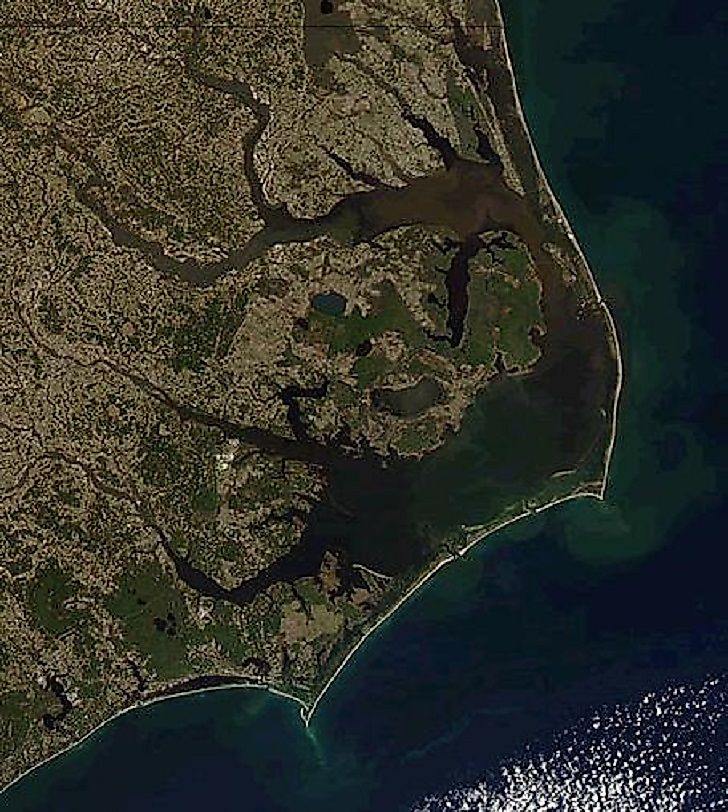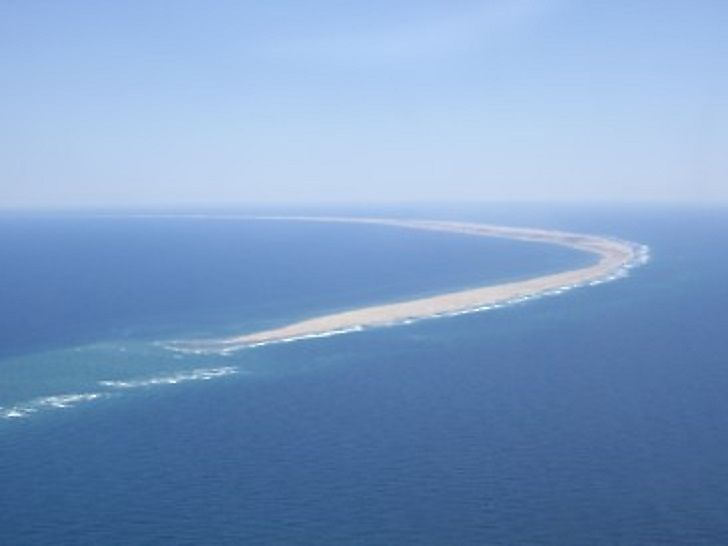Where Is The Graveyard of the Atlantic?

5. Treacherous Waters Of The Outer Banks
Two locations in the Atlantic Ocean earn the feared reputation of being the “Graveyard of Atlantic”, signifying a large number of shipwrecks that have occurred over centuries at these locations. One of them includes the Outer Banks of North Carolina and Virginia. The Outer Banks region encompasses an area riddled by barrier islands and peninsulas off the coasts of North Carolina and some parts of Virginia. Though the Outer Banks are a popular tourist destination, famous for surfing and fishing activities, the seas around the region are quite unsafe for boaters and shipping vessels. The Graveyard of the Atlantic Museum located in the Hatteras Village on the island of Hatteras in the Outer Banks displays evidence of the numerous shipwrecks associated with this part of the Atlantic Ocean.
4. Unforgiving Nova Scotia Shores

Located 300 kilometers off the coast of Halifax in mainland Nova Scotia, the Sable Island (pictured) is a popular tourist destination in summer and is also a part of a protected National Park Reserve. The waters of the Atlantic Ocean around the island is, however, infamous for their treacherous nature, being responsible for the sinking of numerous ships and boats in the past. This section of the Atlantic thus shares the nickname of “Graveyard of Atlantic” with the Outer Banks.
3. Numbers of Shipwrecks
Over 5,000 ships have sunk in the Atlantic waters in the Outer Banks regions and innumerable human lives have been lost in such disasters. The first recorded shipwreck in the area dates back to 1526 . Since then several other shipwrecks involving vessels carrying European explorers, traders, merchants, and fishermen, have been reported at this site. The wreck of the USS Monitor, a warship of the American Civil War, is one of the better known shipwrecks of this Atlantic Graveyard which sunk in the sea on December 31, 1862. The Atlantic waters around the Sable Island has also claimed more than 350 seafaring vessels. One of the earliest known ships to have sunk in this Atlantic Graveyard in 1583 was the British expedition ship HMS Delight. The most recent major shipwreck in this region dates back to 1947 when the steamship Manhasset was claimed by the sea.
2. What Makes These Places So Dangerous To Boats?
Several factors have triggered the fierce reputation of the waters around the Outer Banks. Shifting sand banks, rough waves and unpredictable currents are among the natural factors offering a tough time to the cruising vessels. It is also claimed that “wreckers” in the past who were residents of the Outer Banks would attract ships towards the hazardous shores to trigger a shipwreck so that they would plunder the wealth of the wrecked remains of the ship. For this, they would leave horses with lanterns tied to their necks on the seashore, whose movements along the undulating shores would appear like the lights from a distant ship to the crew of offshore vessels. Thus, the crew, believing that the waters were safe for sailing would approach the shores guided by the false lights and face disastrous consequences. In the case of the Atlantic waters off the coast of the Sable Island, foggy weather, shifting sandbars, and perilous currents, caused by the mixing of the Labrador Current and the Gulf Current, are the primary forces responsible for the huge number of shipwrecks in the region.
1. Maritime Safety and Nautical History Education
Though scientific studies, research, and technology development have significantly reduced the shipwreck incidents over the past few decades in the Graveyards of Atlantic, there is still need of further improvement to ensure the complete safety of the ships that journey on these treacherous waters. As recently as October 29, 2012, the HMS Bounty sank off the coast of North Carolina during the Hurricane Sandy. Several lighthouses have been built by the governments of the nations sharing these dangerous waters to warn ships to stay away from rocky shores. The Canadian government constructed two lighthouses in the Sable Island in 1872, one on each side of the island that has helped lower the number of shipwrecks significantly.











